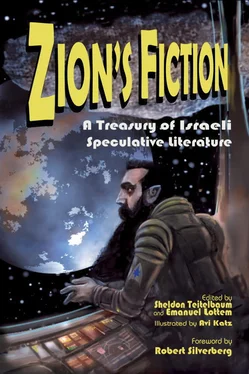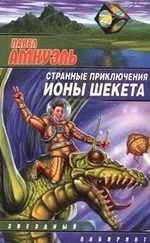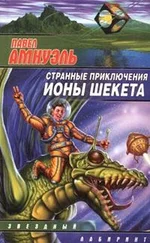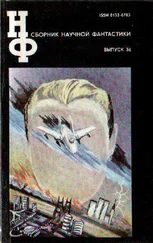At the same time, mainstream Israeli literature was changing apace. Until then, under constant ideological and geopolitical duress such as Israel’s, those Israeli writers who found themselves stifled by traditional notions of Hebrewness, and sought respite in globalization and multiculturalism, remained stifled. But now, as literary scholar Rachel S. Harris observes, despite their manifold cultural origins and varying geographic orientations, the cohort of writers that emerged from the 1970s on and began publishing at the start of the following decade sought to “redefine Zionism and to create a new, more inclusive Israeliness” under the aegis of so-called Post-Zionism. [20] Rachel S. Harris, “Israeli Literature in the 21st Century: The Transcultural Generation: An Introduction,” Shofar 33, no. 4 (Summer 2015): 1–14, 200, quote from p. 1, retrieved from Proquest electronic database. Post-Zionism refers to a sense that by restoring Jewish sovereignty in the State of Israel, the Zionist movement has fulfilled its destiny and may therefore be designated as complete, hence obsolete.
Later on, having gained access to the Internet, some of these newcomers showed themselves eager to transact with the rest of the planet on their individual terms. [21] Sheldon Teitelbaum, “Out of Science Fiction, a New View of Contemporary Reality,” Los Angeles Times , January 17, 1988.
Along the way they also appear to have successfully wedged open Hebrew literature, once the sole domain of European Jews, almost exclusively male. It now extends entry to women with feminist and nonfeminist, secular or religious worldviews and to non-Ashkenazi writers functioning in Hebrew, English, and other languages.
In the process, they have also opened forums and markets and afforded legitimacy to religious Jews often averse to secular literature; to Hebrew-speaking-and-writing Arabs; to Russian-speaking Jews and non-Jews, and to people with a variety of sexual orientations. Soon they will give voice—if voice is still to be given rather than wrested—to the ingathering masses of French immigrants and to other skittish European-Jewish communities considering egress from an increasingly anti-Semitic Europe. More recently, we have seen the first glimmerings of writing by authors of Ethiopian descent.
Most important, from the perspective of this book, not a few among these writers have taken up commercial genres and subgenres, including detective stories, erotica, police procedurals and techno-thrillers, science fiction, fantasy, and even horror, with an aplomb that would have been unthinkable a mere generation ago. Some of them, in fact, have become extraordinarily adept at genre skipping, segueing from the detective format to science fiction to magical realism with a fluidity once inexpressible in Israel.
This has unnerved many among the older-generation Israeli literati. Writers, readers, publishers, critics, scholars all seemed increasingly prone to motion sickness. Ultimately, however, Israeli literature spared itself the fate of terminal navel-gazing and self-delusion under the lingering influence of earlier generations of literary critics. This impulse, though, endures to the present day and accounts for the existence and grudging acceptability of some limited forms of indigenous speculative fiction—the kind that, like Orwell’s 1984 or Burgess’s A Clockwork Orange , addressed recognizable social and political concerns head-on. As Israel’s late president Shimon Peres intoned to an international writers’ conference in Jerusalem in 2008, Israeli writers were latter-day prophets whose job was to admonish the nation. “We like to be rebuked,” observes Hareven, “and we especially like to envision ourselves as people of conscience who want to be rebuked.” [22] Hareven, “What Is Unimaginable?” 45.
Rebuked, but not duped.
With the floodgates breached and the watchtowers shaking on their foundations, the gatekeepers were rapidly losing their power (faint vestiges of which, due to flailing attempts to maintain some modicum of relevancy, still reverberate within the Israeli cultural landscape). The road to SF/F lay open.
First, starting in 1975–76, came two series of translated SF hosted by mainstream publishers: Massada’s was edited by journalist, translator, and later publisher Amos Geffen; Am Oved’s, by journalist and translator Dorit Landes with—for a short time—poet-businessman-lawyer-scholar Ori Bernstein. The White Series (so called for its earlier covers), now edited by Landes alone, became and remains a mainstay of Israeli SF/F.
Other major publishers soon joined in, notably Keter, whose series was originally edited by philosophy professor Adi Zemach, and Zmora-Bitan, which was the first to include modern fantasy as well (most notably Tolkien’s). A few more publishers, while not launching dedicated SF/F series, still saw fit to include some genre titles in their lists of translated fiction.
A handful of magazines accompanied this boom, the most notable and enduring of which, Fantasia 2000 , ran to forty-four issues, from 1978 to the end of 1984. Organized fandom, usually considered integral to the development of a viable SF/F scene, would not come into existence until the mid-1990s. Individual readership, however, was another matter.
Under the stewardship of editors Aharon and Zippi Hauptman and Eli Tene (and with modest assistance from both editors of Zion’s Fiction ), Fantasia 2000 replicated many of the didactic hothouse functions of its American counterparts such as Astounding and The Magazine of Fantasy and Science Fiction . It did so while surpassing those pulp digests in production values and approximating those of the large-circulation magazine Omni .
A glossy monthly with a subscription base of two thousand, plus peak newsstand sales of about three thousand, Fantasia launched a vigorous letters column, book and film reviews, a popular science department, author interviews and profiles, and, most significantly, the first glimmerings of homegrown SF/F. In a country of only 3.6 million at the time, it approached the typical per capita subscription base of its American, certainly its British, counterparts—no mean feat for a niche publication, otherwise ranked the second most expensive on Israeli newsstands at the time.
Fantasia 2000 took on, consciously and conscientiously, the task of cultivating local talent. The results were mixed. Not a few prospective writers sought to emulate American and British magazine SF/F, producing anodyne stories with clunky plots and nondescript characters. Very little about these offerings could be construed as particularly Israeli, or even Jewish, except by dint of authorship. But there were some standouts. In 1980, short story writer David Melamed published Tsavo’a beCorundy (A hyena in Corundy), an accomplished collection featuring several stories first published in Fantasia 2000 . But the book received little critical recognition, leading Melamed ultimately to flee the genre. Hillel Damron, a filmmaker for the Histadrut, the national trade union, published the novel-length version of his memorable short story Milhemet haMinim (The war of the sexes) in 1982. Shortly after, Damron immigrated to the United States, where he self-published several mainstream novels in English.
Other notable Fantasia 2000 alumni included geneticist Ram Mo’av, Ruth Blumert, Yivsam Azgad, Ortsion Bartana, and Mordechai Sasson. Sasson’s story, “The Stern-Gerlach Mice” (1984), featured in this anthology, is a typical example of the original stories published in Fantasia . Editor Aharon Hauptman pursued a career as a futurist and is currently a senior researcher in the Unit for Technology and Society Foresight at Tel Aviv University. Gabi Peleg, Fantasia 2000’s last editor, went on to computer programming. Illustrator Avi Katz, who had joined Fantasia early on, later contributed covers to HaMemad haAsiri of the Israeli Society for Science Fiction and Fantasy (ISSF&F, on which see below) and to the Jerusalem Report , and still later provided art for this anthology.
Читать дальше






